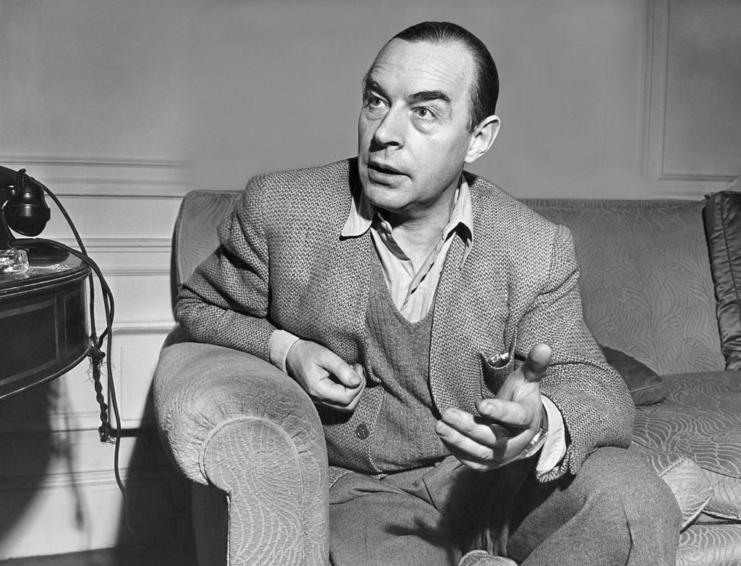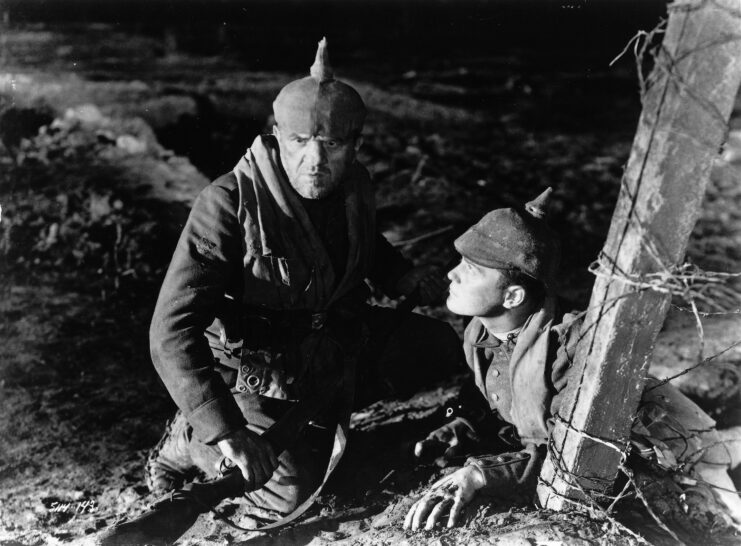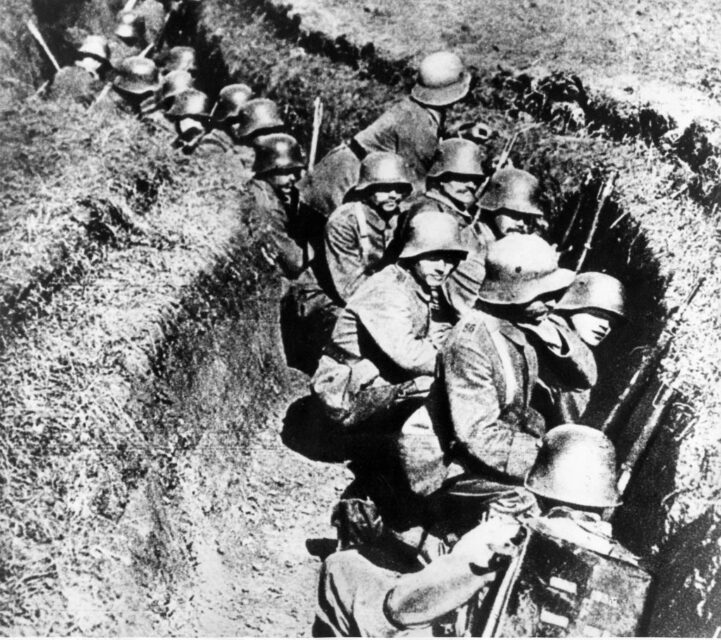One of the most talked about films of 2022 was All Quiet on the Western Front. The adaptation of Erich Maria Remarque’s classic anti-war novel was praised for not only tackling a well-known work of literature, but for its brutal and realistic portrayal of trench warfare during the First World War. The acting, visual effects and storylines all came together to earn the release some of the entertainment industry’s most coveted accolades.
Erich Maria Remarque drew upon his own wartime experiences

The author of All Quiet on the Western Front, Erich Maria Remarque, was a soldier in the Imperial German Army during the First World War. Conscripted at the age of 18, he served on the Western Front with 2nd Company, Reserves, Field Depot, 2nd Guards Reserve Division, seeing action in the trenches between Houthulst and Torhout.
In July 1917, Remarque was wounded by shrapnel in the neck, left leg and right arm, and, after being evacuated from the front, was repatriated to an army hospital in Germany. While he was recalled to service in October 1918, the armistice was signed just a month later.
Over 10 years after the conflict, Remarque published All Quiet on the Western Front. Drawing upon his own experiences, he depicted the brutality and mental strain of serving in the trenches, as well as the detachment servicemen felt upon returning home. The novel struck a chord with readers and went on to sell 2.5 million copies within its first 18 months.
Viewed by many to be anti-war, All Quiet on the Western Front was banned in numerous European countries, the most notable being Germany during its re-militarization. Remarque was accused of exaggerating the horrors of war, and the book was among the first to be publicly burned by the country’s political regime.
All Quiet on the Western Front (1930)

In 1930, director Lewis Milestone premiered the first adaptation of All Quiet on the Western Front. Featuring a largely American cast, including Lew Ayres, Richard Alexander and John Wray, it brought the fighting Paul Bäumer experiences to the big screen – albeit with Vintage Hollywood-era effects and film sets.
The production was, for the most part, faithful to its source material (aside from Paul’s death, which occurs while he’s reaching for a butterfly), and even saw the involvement of German veterans as technical advisors. It received critical acclaim upon, and even went on to win the first ever Academy Awards for Best Director and Outstanding Production.
Similar to the book, the film adaptation of All Quiet on the Western Front was boycotted by the German regime. Officials went so far as to sabotage screenings by setting off stink bombs, letting mice loose in theaters and physically assaulting members of the audience. This eventually led to it being banned in the country toward the end of 1930. It wasn’t re-released until 1952.
All Quiet on the Western Front (2022)

The third film adaptation of All Quiet of the Western Front (there was a television movie released in 1979) is arguably the most successful. The German-language movie debuted on Netflix in October 2022, and used 21st-century special effects to make the realities of World War I-era trench warfare even more jarring for audiences.
Production began in February 2020, and, while relatively true to Remarque’s book, does differ slightly at points. Newcomer Felix Kammerer stars as Paul Bäumer, while Albrecht Schuch took on the supporting role of Stanislaus “Kat” Katczinsky. Many were quick to point out that, story-wise, the 1930 version is superior. That being said, no one could question the film’s impact.
While the recipient of a wide array of awards (far too many to list), the Netflix adaptation of All Quiet on the Western Front made waves at the Oscars, scoring four wins, including Best International Feature Film, and five more nominations. Among them was the most coveted award of the night: Best Picture.
Showcasing the brutality of World War I-era trench warfare

The whole point of All Quiet on the Western Front is to show the hardships of serving in the trenches on the Western Front. While similar films may, in some way, glorify war, the book and its three film adaptations do the opposite. Thanks to advancements in technology, the 2022 version does this the best.
Aside from the fact trenches were narrow, muddy and water-logged, they were also incredibly dangerous for those serving in them. They provided little protection against overhead attacks, despite being designed for that. While they somewhat prevented widespread deaths from the use of chemical weapons, if a soldier couldn’t get their gas mask on in time, they still suffered.
Trenches were also breeding grounds for disease and illness, thanks to rats, dirty standing water and, sometimes, untreated injuries. As the conflict went on and soldiers became weaker and demoralized, militaries began to favor night attacks, with the aim of catching a sleeping enemy force off-guard.
All Quiet on the Western Front shows these dangers, as well as how these conditions hurt those serving in the trenches. When the German lines suffered artillery fire from the Allies, viewers see just how narrowly a number of soldiers avoided death by ducking at just the right time. As well, when hiding in bunkers, the audience sees just how easily everything could collapse, given the less-than-effective materials used to construct them.
Paul loses many of his comrades to enemy action in the trenches. As the Allied forces make their push forward, the film shows the German line moving back and the carnage that occurs as a result – and that’s not even mentioning No Man’s Land and the shell-pocked landscape many had to run through.
Aside from the physical death and destruction, All Quiet on the Western Front also shows the mental toll of such fighting. Paul’s spice for life and naïvety all but disappear as the film progresses. Gone is the innocence of a boy who just became a man, replaced by the horrors of war.
Not only does he lose the friends with whom he enlisted, but those he befriended in the trenches, sometimes to enemy action and, other times, to their own hand, as they’re unable to live with what they’ve seen or the injuries they’ve suffered. Paul’s dead eyes by the time he himself dies show just how much the conflict changed him and serve as a symbol of just how much soldiers on both sides suffered.
Differences between the book and the Netflix adaptation

While the primary story and message are the same between the book version of All Quiet on the Western Front and the Netflix adaptation, there are a handful of differences to note. One is the armistice storyline, which doesn’t feature in the former. In the movie, it offers a juxtaposition between the fighting occurring in the trenches and the discussions being held between Europe’s top military officials.
A second difference omits a part of the story that best shows the psychological effects of the war. In Remarque’s book, Paul is granted leave, but, upon returning home, finds himself alienated from his loved ones. They don’t know what he’s been through and seen on the frontlines, so they can’t relate to him, leaving him feeling isolated. This part is completely left out in the film.
Throughout All Quiet on the Western Front, Stanislaus “Kat” Katczinsky is Paul’s truest friend. Essentially taking the 18-year-old under his wing, Kat provides companionship and support to Paul, who naïvely didn’t realize just how brutal the war would be. It can even be argued that the older man turns into a sort of father/big brother figure.
In the book, Kat is injured by shrapnel and, while being carried to the medics by Paul, is struck in the head by additional pieces. He dies instantly. In the film, it’s not enemy action that leads to the character’s death. Rather, it’s the child of the farmer from whom Paul and him have been stealing eggs. While being carried back, Kat perishes, likely due to blood los, but Paul doesn’t realize this until he’s back at base and told by a medic.
A final notable difference comes in the way Paul dies. Remarque has him die on what is otherwise a rather peaceful day. The book then moves to third person, signaling the protagonist no longer lives. The movie, however, throws the armistice plot line into the mix.
More from us: The Allies Crafted the Largest Non-Nuclear Explosion to Win the Battle of Messines
Despite the agreement being signed by both sides, German Gen. Friedrichs sends the men out for one more fight, so they can return to Germany as heroes, rather than losers. It’s during the fighting that Paul perishes, with his body discovered by a young recruit.
